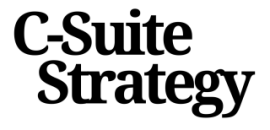
Defining Transparency in the Corporate Realm
What Does Transparency Mean for Businesses?
Transparency in business is a term that's ringing louder in the corridors of corporate power than ever before. When we talk about transparency, we're referring to the practice of being open, honest, and straightforward about company operations, decisions, and performance. Transparency is a cornerstone of trust and credibility between a company and its stakeholders—be it customers, employees, investors, or the general public.
In recent times, the term has expanded beyond financial disclosure to include ethical labor practices, environmental impact, and social responsibility. With the rise of social media and instant communications, stakeholders now expect an unprecedented level of openness. As trust in institutions wanes, navigating the complexities of business ethics becomes increasingly important for any organization aiming to maintain or build its reputation.
Why Transparency Should Be Part and Parcel of Corporate DNA
A study by Label Insight revealed that up to 94% of consumers are likely to be loyal to a brand that offers complete transparency. This staggering figure underscores the paradigm shift in consumer behavior where the provenance of products and services is just as important as their quality. Businesses that embed transparency into their corporate ethos often enjoy heightened brand loyalty and consumer trust—an invaluable and intangible asset in the competitive marketplace.
Transparency isn't just about the positive glow of consumer perception though. The practice contributes directly to the bottom line. Transparent supply chains can reduce costs, minimize risks, and improve efficiencies. When businesses are clear about their operations, they can also avoid the pitfalls of misinformation, which can often lead to costly public relations disasters.
The Nitty-Gritty of Operational Transparency
Operational transparency dives into the how of business functionality. From the supply chain logistics to the day-to-day running of an office, being transparent in these processes can greatly improve internal and external communication. It allows employees to understand the bigger picture and align their work with the company's strategic goals. Externally, it shows customers and other stakeholders that the company holds itself accountable for its actions and operations.
Transparency isn't just a word we like to toss around; it has become a quality state that businesses must earnestly strive to achieve and maintain. It's crucial not to confuse transparency with oversharing, which can be detrimental. There's a delicate balance to be struck between being open and protecting the privacy and competitive positioning of a company.
Conclusion
The road to a transparent corporate strategy may be challenging, but as we will explore in later sections, the payoff in financial integrity, ethical standards, and stakeholder trust is well worth the journey. Whether it's through comprehensive financial reports, accountability to government requests, or the way a company’s leaders embody transparency, the path to clarity and open communication can forge a strong and resilient business ready for the future's challenges.
The Financial Transparency Playbook
Demystifying Financial Reports: A Transparency Necessity
Financial transparency is the bedrock of trust in the corporate world. A transparent financial ecosystem enables stakeholders, from investors to the public, to assess the health and integrity of a company. Today's business landscape demands that organizations not only produce financial statements but also do so with clarity and honesty. According to the symbiotic relationship of business law and ethics, the alignment of financial disclosures with ethical practices is crucial in building stakeholder confidence.
Shining a Light on Financial Statements
In an era where 'transparency' is not just a buzzword but a business imperative, the details in financial reports are under more scrutiny than ever. Detailed disclosures about revenue streams, expenditure, and financial health are analyzed to form a true picture of a company’s standing. Case studies reflect that firms adhering to high standards of financial transparency often enjoy better financing conditions, lower capital costs, and increased valuation. One such study by Transparency International highlights that companies with opaque accounting practices face steeper obstacles in capital acquisition.
Financial Policies as a Transparency Gauge
To measure a company's commitment to transparency, one must examine its financial policies. These documents detail the company's approach to financial reporting, reveal their commitment to regular audits, and clarify their strategy for managing irregularities. Policies should not only be 'transparent' in word but also in action. A policy on paper is only as good as its practice in the public domain. It's not just about being open; it's about demonstrating actions protect the company's integrity and shareholders' interests.
Expert Insights: Cutting Through the Financial Fog
Experts from top universities and financial oversight bodies lend their voices to the conversation around financial transparency. They often publish groundbreaking insights in books and journals that push the narrative forward. For instance, Harvard University Press releases frequently highlight the need for more refined and accessible financial data to empower responsible decision-making. The current thread in expert discourse underscores the importance of demystifying financial terminologies and concepts for the wider community, who are often stakeholders in these corporate narratives.
Trends in Transparency: Global Strides and Stumbles
Transparency is not an isolated trend but a global movement. The European Union’s directives on financial transparency and the U.S. Securities and Exchange Commission’s regulations are excellent examples of how legislation is advancing the cause. These legal frameworks hold public officials accountable and demand that businesses operate with a clear, transparent picture design. While progress is notable, challenges persist. Reports indicate a significant gap in the adoption of transparent practices across different geographical regions and industries, suggesting a roadmap toward universal transparency is still needed.
The Role of Public Reporting in Fostering a Transparent Financial Environment
Public reporting of financial information acts as a trust amplifier between corporations and civil society. An April transparency report can change how stakeholders perceive a company’s dedication to an open business model. When financial statements are not just a statutory requirement but a detailed exposition, they assure the community that the company walks the talk of transparency. In the modern age, where data is power, a transparent financial narrative empowers all involved parties to engage meaningfully in the company's growth and challenges.
Unveiling the Veil: Case Studies in Business Transparency
Spotlight on Success: Businesses Winning with Openness
If we've learned anything from the plethora of corporate scandals over the years, it's that a hidden agenda can often be a company's Achilles' heel. In contrast, transparency, that buzzword resonating in boardrooms and break rooms alike, is increasingly linked with business success. Whether it's fostering trust with stakeholders or clarifying decision-making, opening the kimono can certainly pay dividends.
Zappos: Keeping Company Culture in the Public Eye
Take Zappos, for instance: a beacon of transparency in the retail industry. Their 'open book' management style and commitment to keeping employees informed saw Forbes lauding their culture. Zappos not only makes their policies and earnings public but also frequently updates their financial data to maintain transparency with their customers and staff. Their robust approach illustrates how sharing knowledge freely can enhance a brand's image and morale internally.
Buffer: Pioneering Radical Transparency
Then there's Buffer, a social media company that has taken transparency to unprecedented levels. From disclosing employee salaries to sharing financial reports, Buffer's radical openness has been a fascinating case study for many. Through this, they've built a fiercely loyal community and workplace, with lessons on trust transparency that are rippling across industries. This enhanced listening to the needs of both employees and customers has been pivotal in their sustained success.
Patagonia: Aligning Transparency with Brand Values
Outdoor clothing giant Patagonia has built an empire on the back of ethical transparency, aligning its corporate strategy with environmental stewardship. By giving the public a transparent view of their supply chain's social and environmental impact, they're not just advocating for change; they're practicing it. Patagonia's transparency in its actions to protect the planet goes hand-in-hand with customers' desire to make responsible purchases, proving that a clear conscience can indeed be good for business.
Considering the Cons: The Landscape of Resistance
Of course, it's not all rainbows and sunshine. Some sectors, particularly where national security or sensitive information is involved, naturally push back on demands for openness. Additionally, certain segments of the business world may argue that price transparency can lead to reduced competitiveness. There's a nuanced debate to be had, acknowledging the fine line between the need for discretion and the potential perils of operating in the shadows.
Real-World Impact: Beyond the Buzzword
Beyond the anecdotal, the numbers paint a clear picture: A 2016 Harvard Business Review study found that companies with higher transparency scores experienced better market returns than their less open counterparts. This shift towards the sunlight has ripened into a full-blown trend, with clear correlations emerging between transparency, trust, and the bottom line. Today, businesses are beginning to recognize that veils may be meant more for bridal runways than boardroom strategies.
Transparency and Its Impact on Corporate Ethics
The Ethical Dimension of Transparency
When a company commits to transparency, it's not just about sharing information openly; it's about fostering an ethical culture that resonates with stakeholders. Trust is the linchpin of all business transactions, and trust is built on the foundation of transparency. Institutions like Transparency International have long highlighted the correlation between transparency and reduced corruption. A transparent approach to business operations can prevent unethical practices by making misconduct more difficult to hide.
Empirical evidence stresses the importance of transparency. According to a study from the Harvard Business School, firms that reported their greenhouse gas emissions had overall higher ethical standards, which suggests a link between transparency about environmental impact and overall corporate responsibility.
Financial Integrity and Transparency
In the realm of finances, financial integrity is a cornerstone of ethical business behavior. Companies that disclose complete and accurate financial information empower investors with the data needed to make informed decisions. For instance, regulations like the Sarbanes-Oxley Act require strict financial disclosures, aiming to protect shareholders from accounting fraud and financial misconduct.
Moreover, transparent financial statements are not just a regulatory requirement but a catalyst for ethical behavior within a company. Organizations that openly share their financial health encourage a culture of honesty and ethical decision-making.
Community and Stakeholder Engagement
Transparency extends beyond the balance sheet. It embodies a company's interaction with its wider community and stakeholders, including how it responds to issues of public concern. By actively engaging stakeholders and being transparent about actions and decisions, companies can ensure that their practices align with societal values and expectations.
Public forums, stakeholder meetings, and CSR reports are practical examples of how firms practice transparency in their engagement with the community. These activities not only provide clarity and foster dialogue but also build trust and reinforce the company's ethical stance.
The Ethics of Transparency in Decision Making
Clearly articulating the rationale behind corporate decisions is a trait of an ethically transparent organization. When employees understand how and why decisions are made, they are more likely to align their own actions with the company's ethical standards. This transparency in the decision-making process ensures a shared understanding and commitment to the company's core values.
By embracing transparency, companies take critical steps towards ethical business conduct, offering a beacon of trust to consumers, employees, and the wider community. It’s clear that when companies share not only their successes but also their challenges, they construct a more authentic and ethical narrative that stakeholders can believe in and support.
Statistically, firms that value transparency tend to enjoy better brand loyalty. A Sprout Social report highlighted that 86% of Americans believe transparency from businesses is more important than ever before, thereby linking transparent practices directly with consumer trust and corporate reputation.
Transparency from the Top: Leadership's Role in an Open Culture
The Guiding Lights: Leadership's Crucial Role in Cultivating Transparency
Leaders shape the ethos of an organization. It is their actions and commitment to clear, honest communication that paves the way for an open culture. The presence of transparency in leadership is more than a buzzword; it is a strategic approach that leverages openness to foster trust and engagement among all stakeholders. Leaders must not only endorse transparency in word but also demonstrate it through their actions, thus serving as role models for the entire organization.
Open Book Management: A Strategy for Inclusion and Empowerment
An example of leadership-driven transparency is the concept of Open Book Management, where financial data isn't locked away but shared with employees to involve them in the company's performance. Such strategies give employees insights into the business that can lead to increased job satisfaction and motivation. Surveys have shown that when employees are clued into the company's financial health, they are more likely to contribute ideas and actions that can drive the company forward.
Real-World Glimpses: Leaders Who Walk the Talk
Take, for instance, the leadership at Buffer, a social media management platform known for its radical transparency. The company not only publicly shares its salary formula but also maintains a live data dashboard showing company revenues. This openness is indicative of a broader commitment to transparency that echoes through their entire business model, creating a ripple effect of trust throughout their customer base.
Frameworks for Transparency: Setting Clear Policies and Expectations
Transparency starts with a clear understanding of what information is shared, how, and when. Leaders in transparent organizations often craft policies that outline these details, setting a standard for operations at all levels. A leader's willingness to openly share information invites participation and critical dialogue, thus advancing the decision-making process. Harvard University Press publishes works that delve into the dynamics of transparent leadership and provides frameworks for how leaders can manifest this quality in their own practices.
Navigating the Thin Lines: Discretion and Openness
Even the most open cultures have to balance transparency with discretion, especially where sensitive information is concerned. How leaders manage this balance can define an organization's transparency quality. What is crucial here is the consistent application of transparent practices while safeguarding private information—maintaining clarity about the reasons behind withholding certain pieces of information—fostering an environment of trust even in the face of necessary secrecy.
Leveraging Transparency for Change and Accountability
Leadership transparency not only guides internal behaviors but also shapes the organization's external reputation. When leaders publicly address instances where the company falls short, acknowledging errors and outlining rectification plans, they set a powerful example of accountability. The work of Transparency International highlights the role of transparency in combating corruption, ensuring that public officials are held accountable, and illustrating that the presence of transparent leadership can significantly reduce unethical behavior within organizations.
Conclusion
In the tapestry of corporate strategy, transparency is a thread woven in by deliberate leadership choices. It is the guiding principle that can increase employee engagement, drive innovation, and establish a formidable reputation of ethical standards. Leaders who embrace transparency signify a commitment to an open culture that values each contributor's insights and acknowledges the community's worth within the larger corporate narrative. As leadership roles evolve to meet the demands of a rapidly changing business landscape, the emphasis on transparency remains a timeless cornerstone of trust and success.
Balancing Act: Privacy Concerns and Transparency in Data
The Interplay of Privacy and Transparency in Corporate Data Management
In our ever-connected world, business leaders are continually navigating the tightrope between maintaining privacy and championing transparency. It's a balancing act that requires finesse, especially when handling sensitive data that can have significant implications for personal privacy. This essential equilibrium fosters trust—not only amongst consumers but also within the corporate structure itself.
Studies Highlighting the Privacy-Transparency Dichotomy
Data plays a pivotal role in today’s corporate strategies, yet it’s subject to privacy laws and consumer expectations. According to studies by the International Association of Privacy Professionals (IAPP), 58% of surveyed companies recognize the importance of data privacy for their brand image. Conversely, Transparency International reveals that transparency efforts, like openly sharing data about operations and governance, can reduce corruption risks and enhance accountability.
Real-World Data Dilemmas: Where Companies Draw the Line
Examples abound of corporations grappling with this duality. Consider a tech giant that regularly publishes transparency reports detailing government requests for user data. These reports, while promoting open governance, are also carefully curated to safeguard individual privacy and national security concerns.
The line between what’s shared and what’s shielded is complex. For instance, a financial institution may be transparent about its general lending practices, yet it must protect individual customer data as mandated by law and ethical standards. Thus, the challenge is to provide meaningful transparency that informs without infringing on privacy.
Best Practices for Striking a Balance
Civil society organizations suggest clear privacy policies, regular training for employees in data handling, and robust security measures as best practices. The insights from experts within academia, such as those from Cambridge University Press, emphasize the need for companies to have transparent decision-making processes. They also point out that how a company responds to a data leak can be as important as the measures taken to prevent one.
Embracing Evolving Transparency Norms
Business transparency isn’t static; it evolves with public sentiment and legislative changes. A UK study on financial statements transparency from the University of Cambridge indicated a growing demand from the public and investors for higher quality disclosures. Similarly, in the United States, the enactment of laws like the California Consumer Privacy Act (CCPA) underscores the shift towards greater data protection and transparency.
As we navigate this landscape, it’s vitally important for companies to stay abreast of these changes, not merely to comply with laws but to fortify the trust of their stakeholders.
Global Perspectives on Transparency: Comparing Policies Across Borders
Policies That Shape Global Transparency Practices
When we look across borders, transparency takes on various shades, influenced by regional nuances, cultural ethos, and governmental structures. It's not just a matter of disclosing information; global transparency is about creating a web of trust that connects governments, businesses, and societies. For instance, in the European Union (EU), the GDPR has set a precedent for data transparency and protection, while the United States accentuates transparency in financial communications through regulations like the Sarbanes-Oxley Act.
Interesting statistics from Transparency International's Corruption Perceptions Index highlight that countries with stringent transparency policies typically score higher. This direct correlation underscores the tangible benefits of implementing robust transparency measures at a national level.
Impact of Transparency on Anti-Corruption Efforts
Transparency is a formidable adversary to corruption. By requiring public officials to hold themselves accountable, countries can strengthen their stand against corrupt practices. For example, initiatives such as the Extractive Industries Transparency Initiative have improved the clarity in governmental management of natural resources, rippling the positive impacts into the broader economy and civil society. Transparency International actively collaborates globally to promote anti-corruption through transparent practices, underscoring that when the government's decision-making process is evident, it deters misconduct.
Exemplifying Transparency in International Business
Businesses operating on an international scale face the challenge of aligning with varied transparency expectations. Familiar examples include technology companies faced with divergent requirements for government requests for user data. These organizations often produce transparency reports to articulate their compliance with such requests. Companies championing transparency, such as Salesforce, with its comprehensively detailed financial reports, set a benchmark for others in the private sector.
Transparency Across Educational and Non-Profit Spheres
The quest for transparency extends into academia and non-profit arenas. Prestigious institutions such as Cambridge University have embraced an open approach by making a wealth of research accessible to the public, enhancing their reputation and encouraging peer scrutiny. Similarly, non-profits like the Open Government Partnership work diligently to share their financial statements and operational strategies to build donor trust and establish a transparent reputation that encourages further investment.
Disparities and Challenges in Transparency Norms
While thriving economies strive for high transparency standards, developing nations may lack transparency due to less sophisticated systems and resources, posing a significant barrier to international cooperation and investment. The disparities in the transparency landscape necessitate attention from world leaders, investors, and international agencies to support improvement journeys, particularly as it relates to national security and civil society empowerment.
Conclusion
In understanding transparency through a global lens, one can appreciate the complexity and diversity in how policies are developed and enforced. A commitment to learning from other cultures and systems to inform our policies can only serve to enrich and enhance our collective push for a world where transparent practices are not just encouraged but expected. By examining international best practices and tailoring our strategies accordingly, we become more equipped to conduct business ethically, responsibly, and successfully in a tightly interconnected world.
Future-Proofing Strategy with Transparency
The Sustainability of Openness
In the bustling epicenter of corporate dynamics, the concept of transparency sails beyond today's standards into the horizon of tomorrow. Businesses aiming to future-proof their strategies are increasingly embedding openness into their foundational blueprint. This move isn't just about staying on top of trends; it's becoming a non-negotiable aspect of corporate longevity. Think of it as a trust pact with stakeholders—a symbiotic assurance that grows stronger with each shared decision-making process.
Strategizing with Transparency at the Core
What exactly does a future-proof strategy look like? Consider this: a framework where transparent practices are not afterthoughts but are the skeletal structure of the plan itself. Firms are maneuvering towards a landscape where public officials are held accountable, and financial statements are as clear as crystal. The thrust towards a more transparent picture in design and governance is evident in the rise of open-source data and the call for global standards of financial reporting.
Insightful Projections from Transparency Advocates
Experts in the field, from academicians to practitioners, have underscored the essence of transparency in mitigating risks and fostering innovation. For instance, Transparency International, the global coalition against corruption, routinely underscores the direct correlation between openness in governance and the lowering of corruption levels. Likewise, studies from prestigious universities press the need for transparent environments as they are proven cradles for entrepreneurial ingenuity and investor confidence.
Technology as an Ally in Transparent Evolution
The accessibility of technology has been a game-changer in upholding and enhancing transparent operations. Human-computer interaction mechanisms are facilitating an environment where data can be shared and analyzed openly. From blockchain's role in ensuring public accountability to AI and analytics helping parse vast amounts of data for transparent insights, technology is undeniably a stalwart ally in this journey.
Staying Ahead with Adaptive Transparency
As fiscal landscapes morph, regulatory bodies and civil society demand greater visibility into business practices. In the U.S. and across Europe, advocacy for transparency resonates with legislative actions aimed at fortifying public trust. Real-time access to data and the unyielding spotlight on corporate actions are fast becoming the norm. Companies that remain agile, revising their policies to adapt to these expectations, are those that will lead the way into a future marked by integrity and success.
Real Cases Echoing the Transparency Mantra
Be it the financial sector or the tech industry, success stories abound, strengthening the notion that a transparent approach equates to a competitive edge. Reports demonstrate that businesses that voluntarily offer more detailed disclosures often find themselves rewarded with deeper customer loyalty and investor backing—essentially, transparency begets trust, and trust equates to value.














